
Power SuppliesRS-232-compliant parts need a minimum of two supply voltages, one that is greater than +5V and one that is less (more negative) than -5V. These two supplies are needed to guarantee the minimum ±5V output swings required for the transmitters. See Figure 1. In systems that already have ±12V, this isn't a problem. However, in systems being designed today, ±12V (or other voltages) aren't usually available. To solve this problem, Maxim has designed a wide array of parts that can be powered from a single supply by including power-supply converters built directly onto the IC.
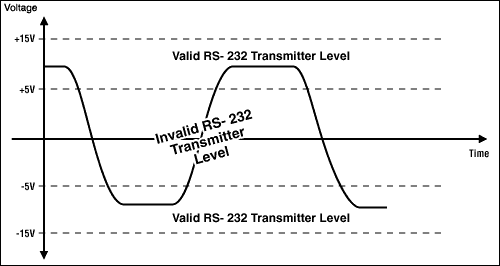
Figure 1. RS-232 transmitters must swing at least ±5V. This means that they must be powered with supplies ±5V.
The following sections describe different power-supply options.
+5V OnlyWhat makes +5V-only parts possible is having two charge-pump power-supply converters built directly onto the IC itself. The first charge pump works as a doubler and creates +10V from the 5V supply, minus some losses. The second charge-pump converter is configured as an inverter and makes -10V from the +10V, again with some losses. These ±10V power supplies are then used to power the transmitters. Although the charge-pump circuitry is built into the integrated circuit itself, four inexpensive external capacitors are required. Figure 2 shows the MAX202E. Note pins 2 and 6. Pin 2 is the output of the +10V converter, and pin 6 is the output of the -10V converter.
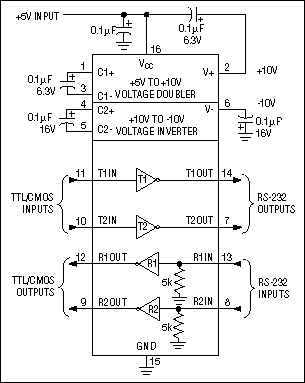
Figure 2. The MAX202E works off a single 5V power supply; ±10V is generated using on-board charge pumps and four external capacitors.
Examples of 5V-only RS-232 parts:
- MAX202/E family
- MAX232/E family
- MAX221/E
Like the 5V-only parts, the 3.0V to 5.5V parts have two charge-pump power supplies built on-board. These RS-232 parts are special because of their low-dropout transmitters. These transmitters can meet the minimum-required ±5V swings, while running from charge-pump power supplies as low as ±5.5V. This makes it possible for these parts to run from a single 3.0V supply and still be fully compliant with the RS-232 specification. Although these parts will run on supplies as low as 3.0V, they have also been designed to run as high as 5.5V. Therefore, the same part can be used for both 3.3V and 5V designs, reducing inventory. Figure 3 shows an example of these parts.
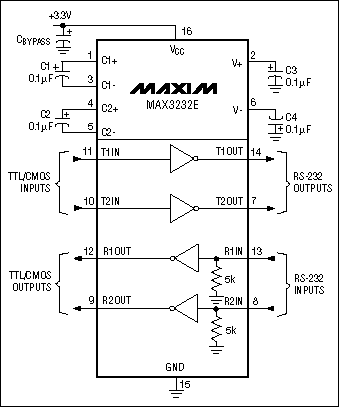
Figure 3. The MAX3232 works off a single 3.0V to 5.5V supply.
Examples of 3.0 to 5.5V parts:
- MAX3221/E family
- MAX3222/E family
- MAX3224/E family
- MAX3238/E family
- MAX3385E
- MAX3386E
- MAX3387E
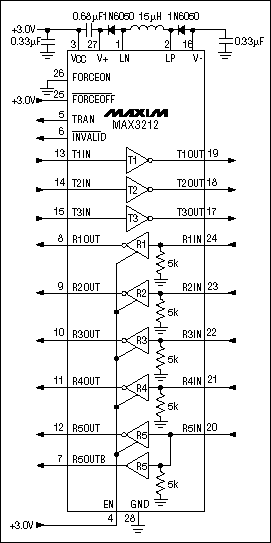
Figure 4. The MAX3212 is designed to run off of a single supply voltage that ranges from 2.7V to 3.6V. It uses a single inductor to generate both a ±6.5V supply.
1.8V to 4.25V OnlyThe MAX3218 takes a hybrid approach to the problem. It uses an inductor-based solution to generate +6.5V. It then generates -6.5V using a charge-pump inverter. With this technique, the part is able to run from a single supply that varies from 1.8V to 4.25V. This wide input range makes the MAX3218 especially useful for battery-powered systems.
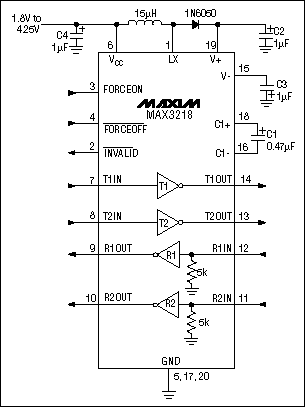
Figure 5. The MAX3218 is designed to run from a single 1.8V to 4.25V supply. It uses an inductor-based power supply to generate a +6.5V supply. An internal charge pump with two external capacitors is used to then generate -6.5V.
+3V/5V and ±12VIn systems that have ±12V available, it becomes unnecessary to have power-supply converters, such as charge pumps, built onto the IC. This allows the IC to have fewer pins, to cost less, and to take up less space. See Figure 6 for an example of such a part.

Figure 6. The MAX3186 is an example of an RS-232 part that requires the host system to provide ±12V.
Examples of parts that use ±12V supplied by the host:
- MAX1406
- MAX3185
- MAX3186
- MAX3187
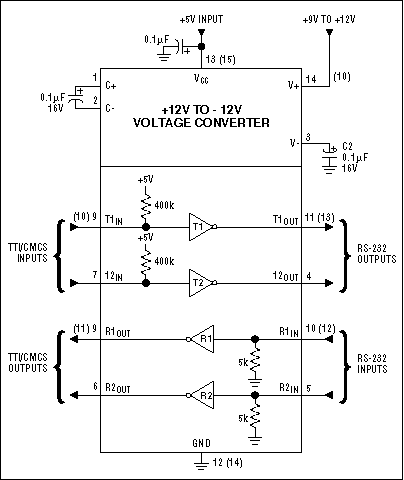
Figure 7. The MAX201 is an example of a part that is powered from a 5V and 12V supply. The -12V is generated using an on-board charge pump and two external capacitors.
Examples of parts that use ±12V supplied by the host:
- MAX201
- MAX209
- MAX3209E
欢迎分享,转载请注明来源:内存溢出

 微信扫一扫
微信扫一扫
 支付宝扫一扫
支付宝扫一扫
评论列表(0条)